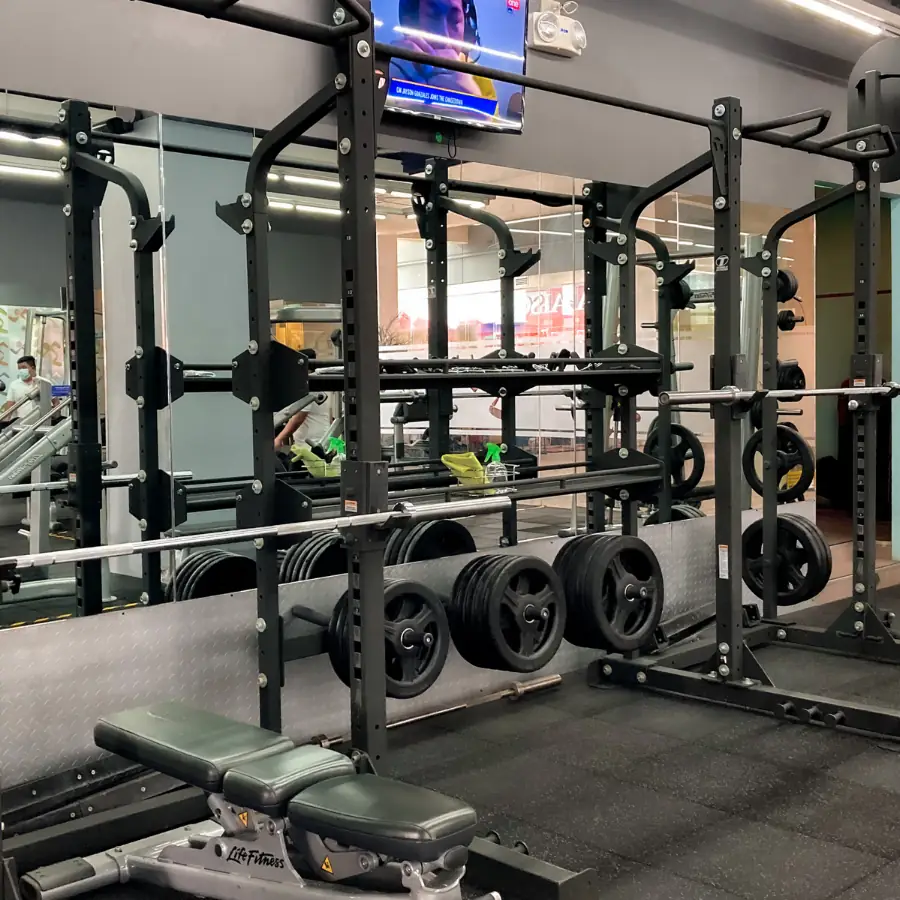



Running a successful, highly profitable gym requires using a unique business model. This model is not taught in schools, and is not applicable to any other industry.
This is why many gym owners struggle. They work crazy hours and don't make money even when their gyms are at capacity!
In reality, when gym owners adopt our tried-and-tested business and operational models (that does not involve any extra time or money investment), most owners can run extremely profitable businesses while working less hours... while consistently getting 5-star reviews from their members.
"When you first start working with us, we are laser focused on increasing your short-term profits (you get results in days!)"
We first focus on boosting your short-term profits. This then gives you the breathing space and cashflow to turbocharge your long-term profits.
Oh, and the best part?
Working with us does not require any time or money investment from your part.
We are able to do this by leveraging our state of the art gym-tech for your gym.
P.S. We ensure that we have no conflict of interest between those gym owners we help.

The Problem: The gym was generating 150k in revenue, but the gym owner was underpaying himself and working crazy hours. He was using the typical gym operating model, and he know it was only a matter of time before he had to give up.
The Solution: Although the gym was making 150k in ARR, it wasn't enough because it didn't give the gym owner enough to live off after all other expenses. Like many other gyms, this business' revenue was steady, but stagnant at a low level.
The first thing we did was implement systems to increase profits in the short (ie days) and medium term (ie 3 months). We did this by making guarantees of fixed results (mostly weight loss) to existing members and charging mid-to-high pricing to those members. This strategy raised revenue by $75k, without any increases to costs.
The next "phase" of growth was attracting a higher-quality member using cold-outreach and direct marketing methods, which had the benefit of being much cheaper than social media or search ads. At the same time, existing members were slowly phased into higher pricing. This had the effect of raising steady, base revenue by another $100k over a year.

At the start of year 3, to take advantage of the new-year seasonality, we had helped the gym owner place systems in place to a) attract clients willing to pay high-ticket prices for guaranteed results, and b) set up systems that would automatically deliver those results to the clients. We ran these campaigns 4 times in year 3, resulting in a huge increase to revenue.
By the end of year 3, the gym had acquired a reputation for delivering excellent results, and was featured in a few local publications. The gym was attracting highly motivated members without a significant marketing budget. The gym had the systems in place to acquire, nurture and deliver results consistently to clients, and clients would happily pay for those results.
This is the exact model we used to grow this gym's ARR from 150k to 500k over the span of 4 short years.

The Problem: This particular gym owner had priced the gym memberships low enough so that the gym was consistently full at peak times. However, the gym was continuously losing money.
Even worse, as soon as the gym tried to raise membership prices, members would cancel and go to another gym. Enough members would cancel so that the new prices still resulted in an unprofitable gym.
The Solution: The underlying issue were that members considered this gym to be a commodity, and that their experience and results could be replaced by going to a competitor gym.
We first did a non-expensive rebrand of the gym, that involved changing a few words on the gym website and then putting up a few posters to give the impression that the gym had "changed".
The posters focused on making members aware that this particular gym was THE place to come when one wanted fitness support and guaranteed results.
We did this so that new and existing members would stop seeing this gym as a potential substitute to the competition.
Finally, we tripled prices (while giving existing members some time to adjust). Although the gym lost 28% of members the first month, in the second month it attracted a better type of client and the members that stayed were of a higher quality.
The gym became profitable from month 2 onwards.
The Problem: Business profits were low and the gym was nowhere near capacity. A marketing agency had advised the gym owner to run paid ads.
The paid ads would result in an influx of new members, but 78% would cancel within the first month. This meant that the business had lost money on advertising spend, and the gym would still not be at capacity.
The underlying problem was this: The owner had a good gym, but the marketing campaigns were attracting the wrong type of customer, and the gym did not have the right onboarding in place to deal with new members.
The Solution: Our experience shows that paid marketing works (and can work well) but only when done properly.
By properly, we mean that the ad creative needs to be done a certain way, and the gym needs to have the right product for a new member that has come in through the ad.

Firstly, we showed the gym owner that it was cheaper and more effective to have a few hundred flyers printed out and then to distribute the flyers in an area with high footfall.
The key however, was to specify in the flyer a) what type of results someone would get if they went to this particular gym, b) how long it would take to get those results, and c) that only a limited number of spots were available on a first come, first serve basis.
That resulted in new members who were hungry for results signing up, and expecting to be at the gym for a few months to achieve those results. Their expectations have been pre-set.
This campaign boosted the gym's annual profits by 4.2 times.

The Problem: This gym owner was facing a feast/famine situation, where some months revenue would be great, and some months revenue would plummet. There also wasn't any seasonal pattern to this.
As a result, she wasn't able to budget properly. She always to keep excess cash in reserve for low-revenue months, and in high-revenue months, she wasn't able to hire quickly enough to meet demand.
The Solution: A good offer to members is one where they are able to pause their memberships or go on a reduced tier for a few months. This sort of plan increases retention, but leads to unpredictable revenue.
The underlying problem is that a member would spend a few weeks or months at this gym and get good results. Then, they would get complacent, and not show up for a few weeks. They would see their results detriorate, and they would resubscribe. This was what was causing the unpredictable revenue.
The solution was to understand what the "member journey" was for the particular type of customers that this gym attracted, and then to make different offers at strategic points throughout their journey.
For example, when a new member would come in and lose the weight they wanted, we showed the gym owner how to make an offer for "body shaping". Once the member saw the offer, they related to it and wanted it.
The result was a smoothing out of revenue and profits throughout the year. No more holding excess cash back!
We're here to help.
If you are a gym owner, we'd love to help you increase your profits. Just email us support@7figuregym.com.
Copyright © 7 Figure Gym 2024